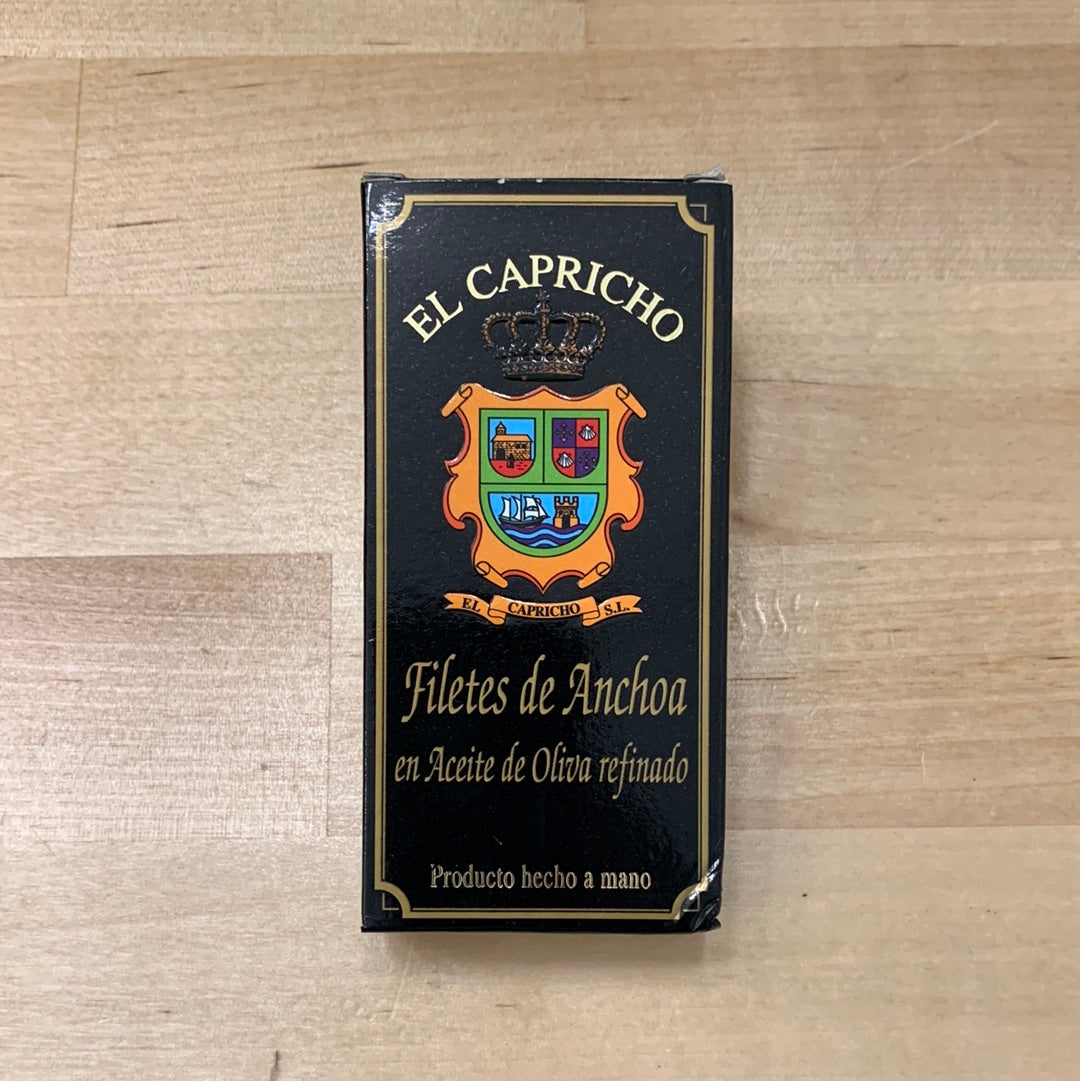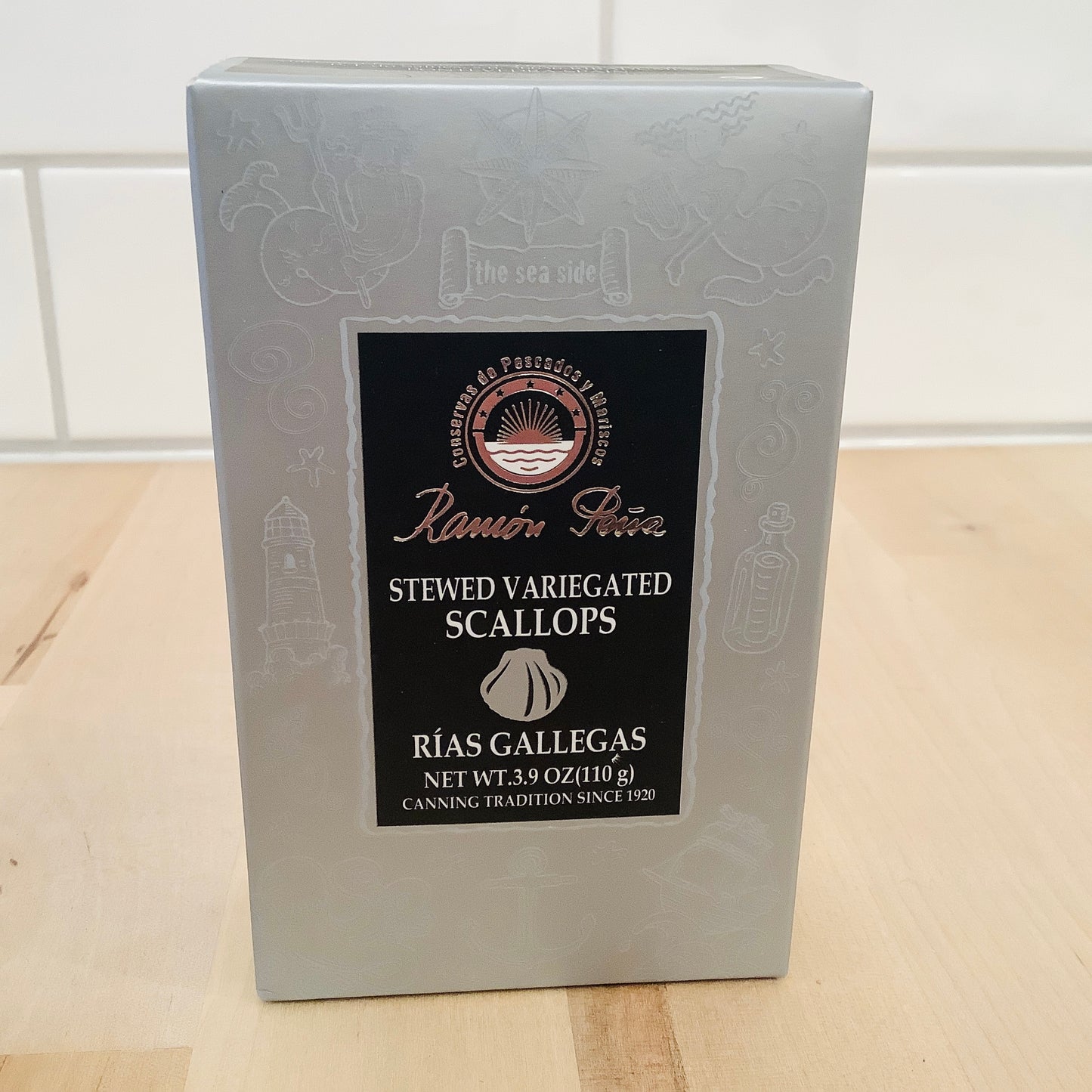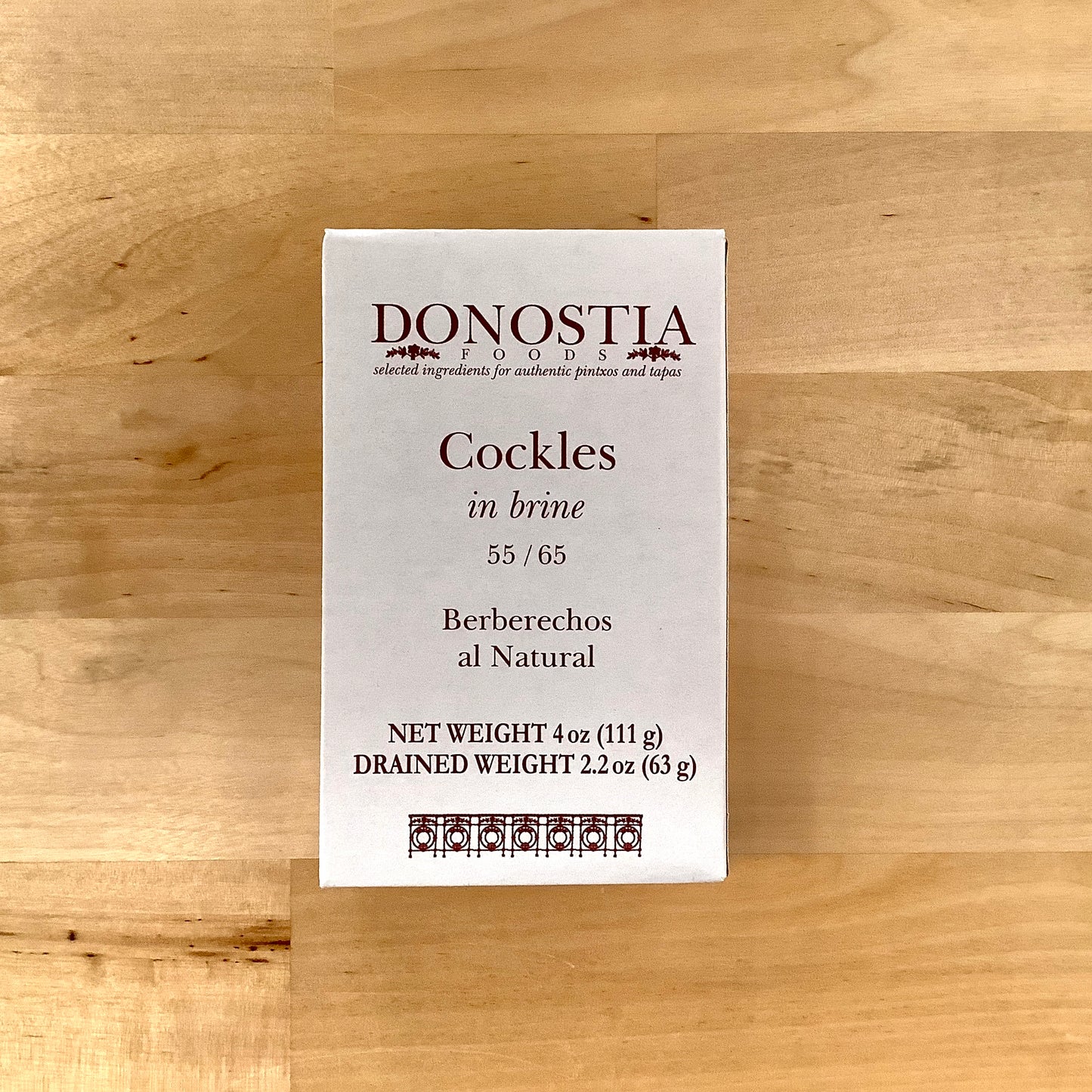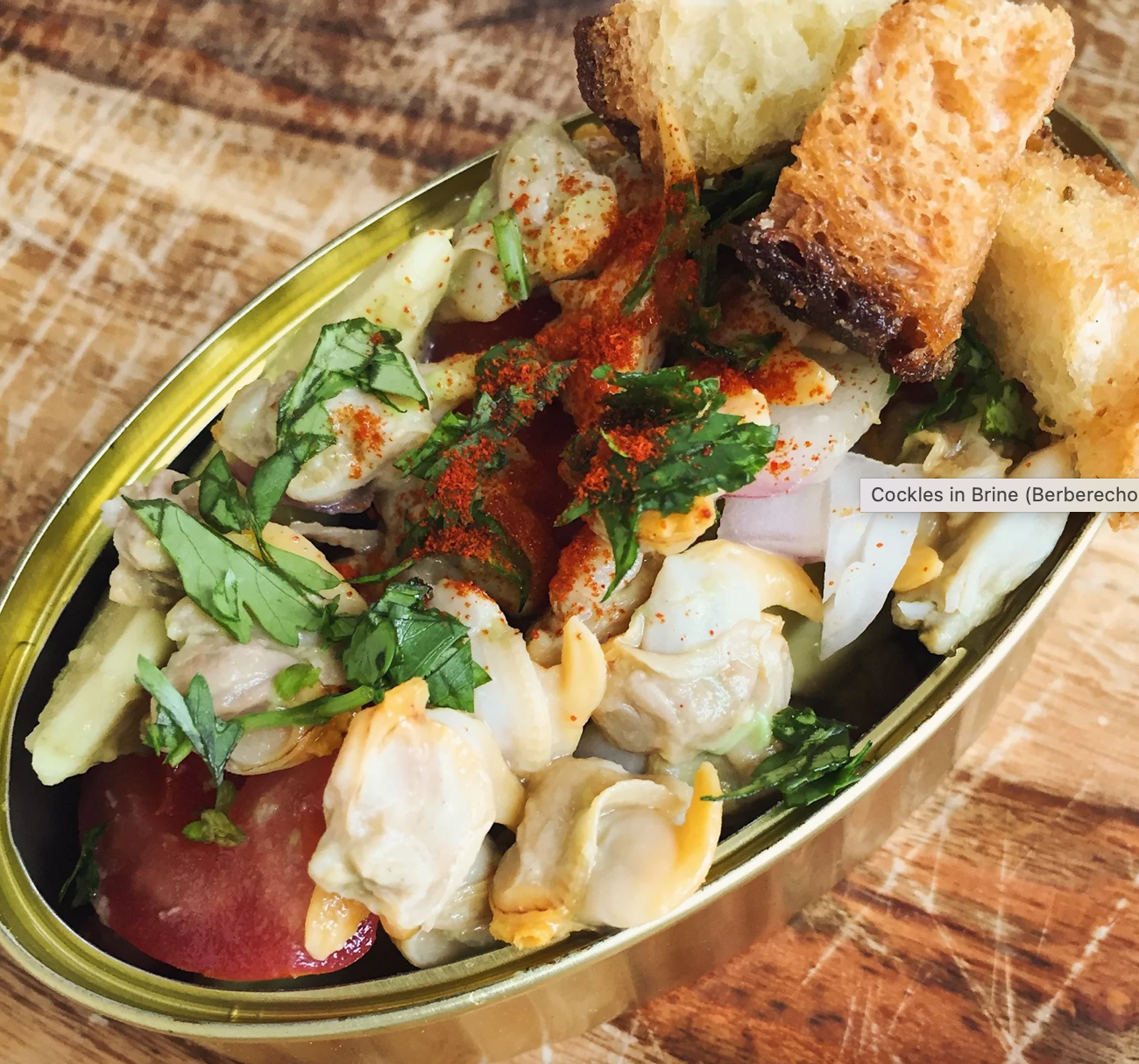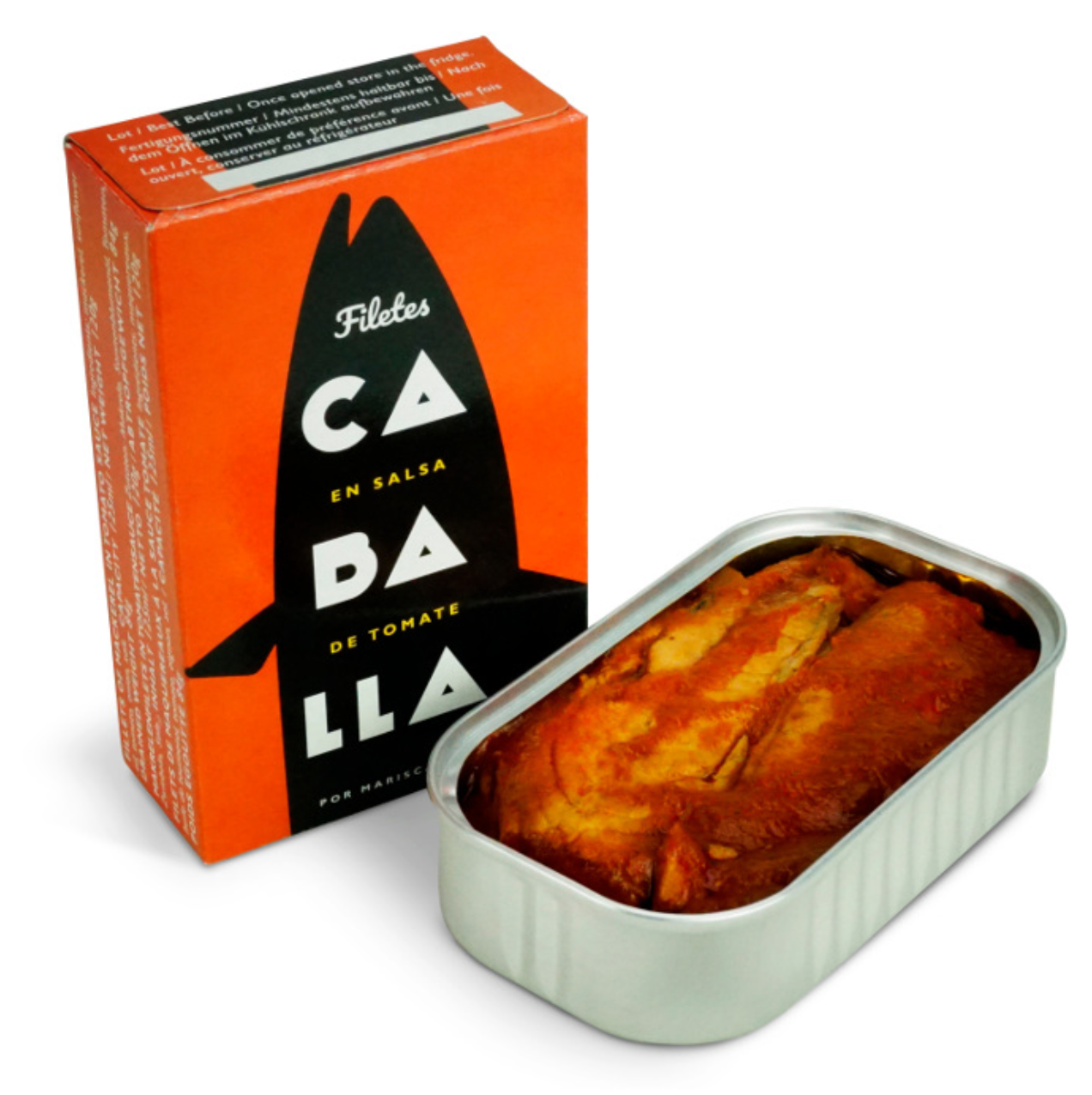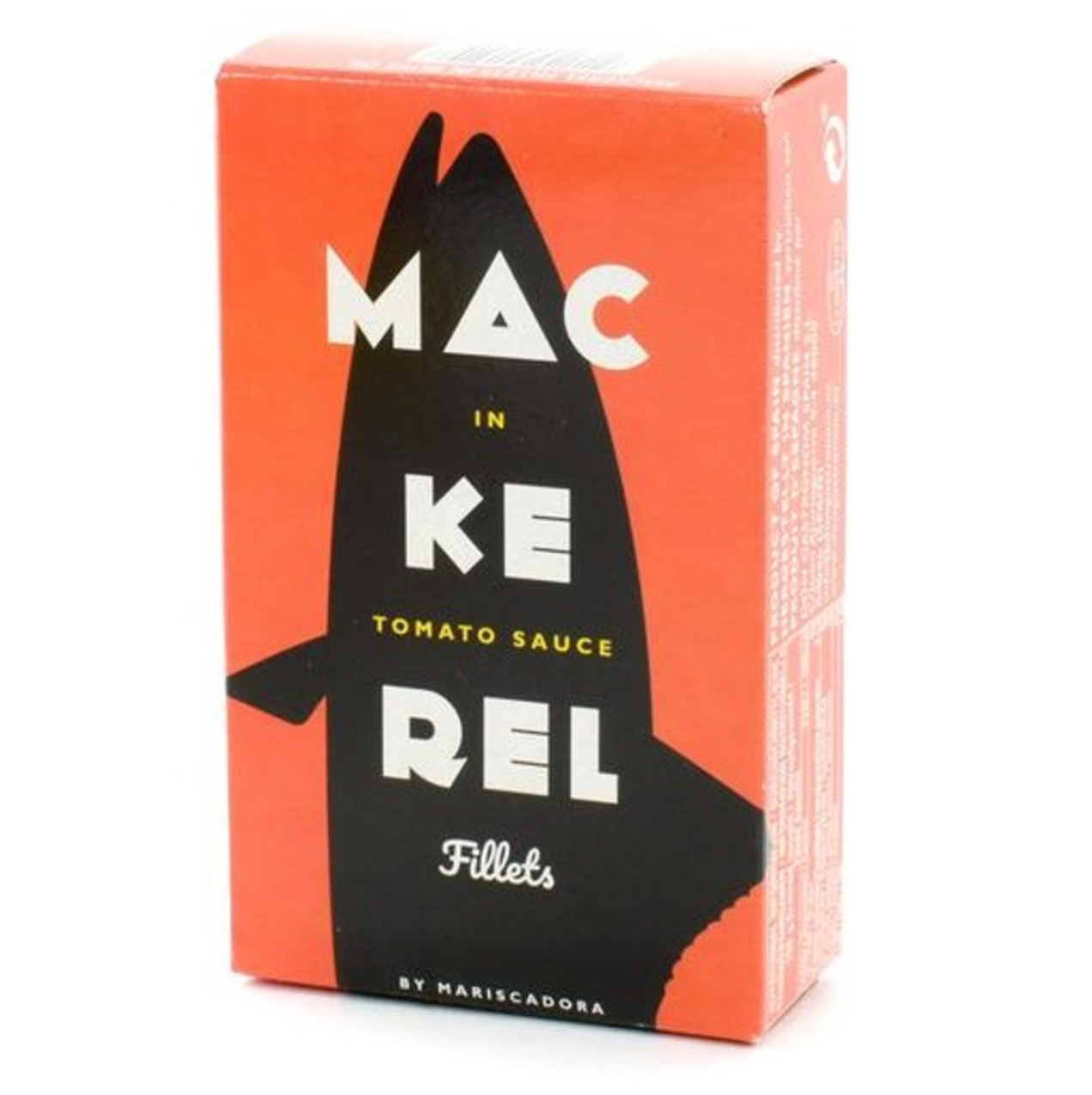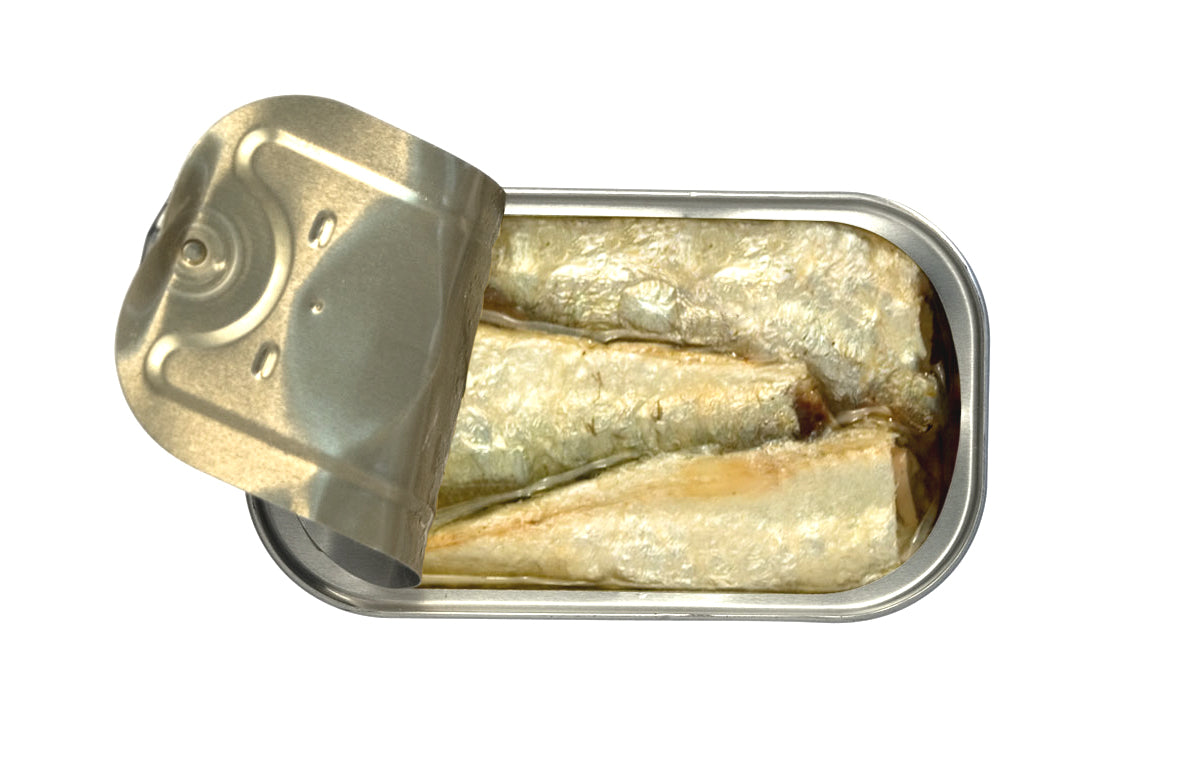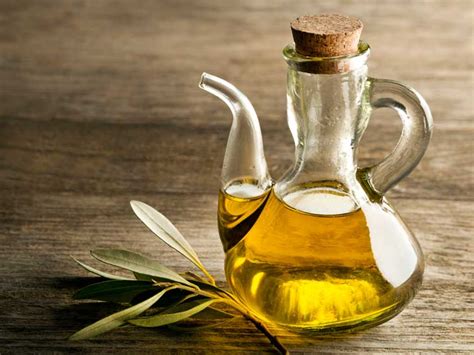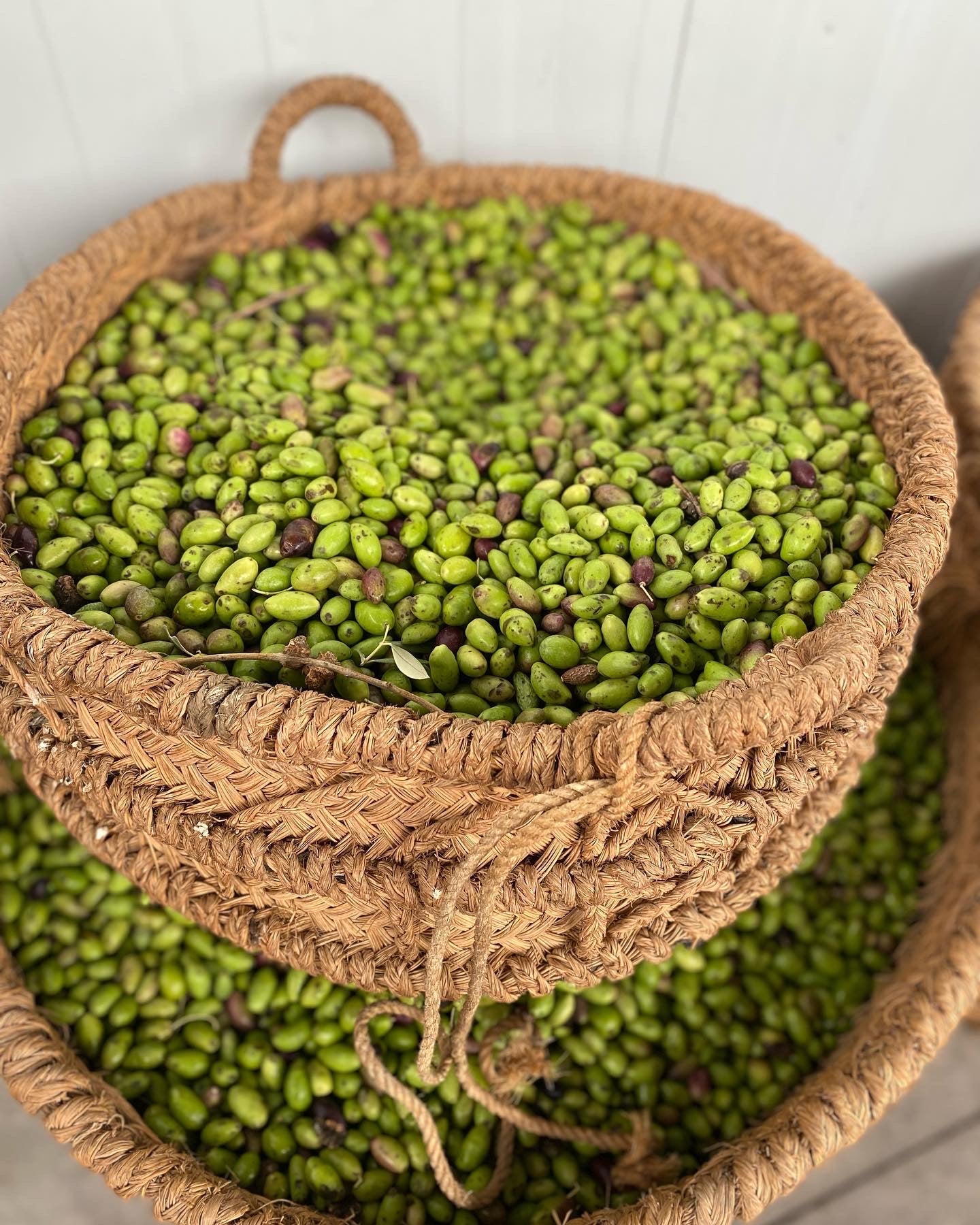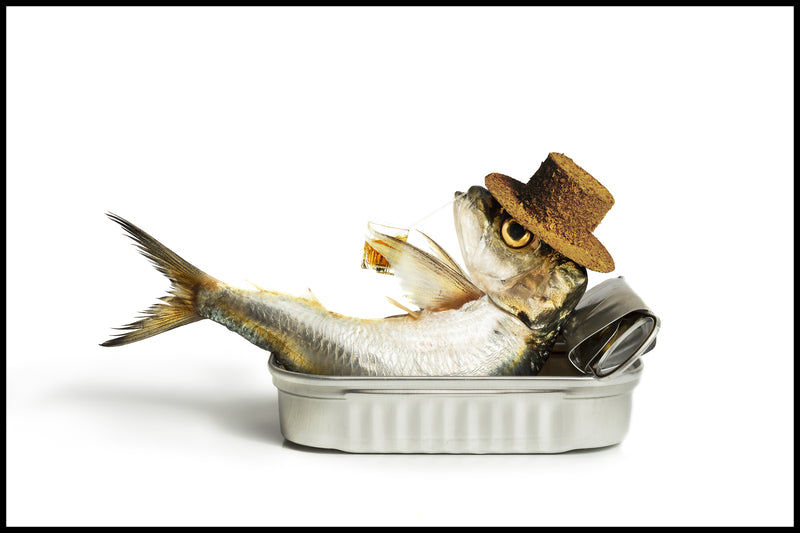
FAQ
People have often asked, exactly how are those powerfully flavorful little things made? And why are some less salty, or more fishy, or, well, just better than others? a detailed explanation of how a brown anchovy goes from being caught to packaged in a tin may help....
1. Catching the Fish:
The process begins with fishing vessels heading out to sea in search of anchovy schools. Though anchovies are caught in several countries, Spanish anchovies from the Cantabrian Sea are know to be the best. These are also caught sustainably. The Cantabrian Sea is known for its commitment to sustainable practices and it is strictly regulated.
2. Sorting and Cleaning:
Once the anchovies are brought onboard, they are carefully sorted then thoroughly cleaned, typically through a combination of rinsing and gentle agitation to remove any impurities.
3. Maturing and Salting:
After cleaning, the anchovies are transferred to barrels or vats for maturing. This process involves layering the fish with salt, which helps preserve and enhance their flavor. The anchovies are left to mature for a specific period, usually ranging from a few weeks to several months. This maturing process allows the anchovies to develop their characteristic rich brown color and deep flavor.
4. Filleting and Deboning:
Only after the anchovies have matured, are they carefully removed from the maturing containers. Each anchovy is filleted by hand, a meticulous process that involves carefully removing the backbone and any remaining bones. Skilled workers ensure that each fillet is properly cleaned and inspected for quality.
5. Packing:
Now that the anchovies have been filleted and deboned, they're ready for packing. The fillets are carefully arranged in layers within the tin, ensuring they are not squished or damaged. Olive oil or another oil is then added to cover the fillets, preserving their texture and flavor.
Then, it's off to you! But keep them in the fridge. Even though they are sealed in their tin, keeping them refrigerated helps maintain that firm, smooth texture, and prevent deterioration.
People have often asked, exactly how are those powerfully flavorful little things made? And why are some less salty, or more fishy, or, well, just better than others? a detailed explanation of how a brown anchovy goes from being caught to packaged in a tin may help....
1. Catching the Fish:
The process begins with fishing vessels heading out to sea in search of anchovy schools. Though anchovies are caught in several countries, Spanish anchovies from the Cantabrian Sea are know to be the best. These are also caught sustainably. The Cantabrian Sea is known for its commitment to sustainable practices and it is strictly regulated.
2. Sorting and Cleaning:
Once the anchovies are brought onboard, they are carefully sorted then thoroughly cleaned, typically through a combination of rinsing and gentle agitation to remove any impurities.
3. Maturing and Salting:
After cleaning, the anchovies are transferred to barrels or vats for maturing. This process involves layering the fish with salt, which helps preserve and enhance their flavor. The anchovies are left to mature for a specific period, usually ranging from a few weeks to several months. This maturing process allows the anchovies to develop their characteristic rich brown color and deep flavor.
4. Filleting and Deboning:
Only after the anchovies have matured, are they carefully removed from the maturing containers. Each anchovy is filleted by hand, a meticulous process that involves carefully removing the backbone and any remaining bones. Skilled workers ensure that each fillet is properly cleaned and inspected for quality.
5. Packing:
Now that the anchovies have been filleted and deboned, they're ready for packing. The fillets are carefully arranged in layers within the tin, ensuring they are not squished or damaged. Olive oil or another oil is then added to cover the fillets, preserving their texture and flavor.
Then, it's off to you! But keep them in the fridge. Even though they are sealed in their tin, keeping them refrigerated helps maintain that firm, smooth texture, and prevent deterioration.
White Anchovies, or "boquerones" are actually a different variation of the same fish - Engraulis encrasicolus.. In Spain you have anchoas and boquerones, the brown and the white anchovies. While both brown anchovies and boquerones start with the same fish, there are a few key differences in the processing methods.
1. Catching the Fish:
Similar to brown anchovies, boquerones are caught using fishing vessels that venture out into the Cantabrian sea. The Cantabrian Sea fishing community is known for its commitment to sustainable practices and is strictly regulated. Many companies voluntarily adhere to more stringent practices - such as MSC - as it is such an important part of their culture and economy.
2. Cleaning and Preparing:
Once the anchovies are brought onboard, they are sorted and cleaned to remove any bycatch. However, the preparation process for boquerones differs from that of brown anchovies. Boquerones are typically gently scaled before further processing.
3. Marinating:
After cleaning and scaling, boquerones undergo a marinating process. The anchovies are placed in vinegar, olive oil, garlic, and sometimes herbs or spices. This marinade serves two purposes: it helps to preserve the fish and adds flavor. The boquerones are left to marinate for a certain period, usually ranging from a few hours to a couple of days.
4. Filleting and Deboning:
Once the marinating process is complete, the boquerones are taken out of the marinade. Each anchovy is carefully filleted, similar to the process for brown anchovies. The backbone and remaining bones are removed, ensuring that each fillet is clean and bone-free.
5. Packing:
Unlike brown anchovies that are often packed in tins, boquerones are often packed in trays with clear wrap. This packaging method allows the boquerones to be visible and beautifully presented, as the bright color and hearty flesh are part of their appeal.
While brown anchovies and boquerones begin with the same fish, the processing methods differ. Boquerones are scaled, marinated, and often presented with the marinade, while brown anchovies are matured, salted, filleted, and packed in tins or jars.
White Anchovies, or "boquerones" are actually a different variation of the same fish - Engraulis encrasicolus.. In Spain you have anchoas and boquerones, the brown and the white anchovies. While both brown anchovies and boquerones start with the same fish, there are a few key differences in the processing methods.
1. Catching the Fish:
Similar to brown anchovies, boquerones are caught using fishing vessels that venture out into the Cantabrian sea. The Cantabrian Sea fishing community is known for its commitment to sustainable practices and is strictly regulated. Many companies voluntarily adhere to more stringent practices - such as MSC - as it is such an important part of their culture and economy.
2. Cleaning and Preparing:
Once the anchovies are brought onboard, they are sorted and cleaned to remove any bycatch. However, the preparation process for boquerones differs from that of brown anchovies. Boquerones are typically gently scaled before further processing.
3. Marinating:
After cleaning and scaling, boquerones undergo a marinating process. The anchovies are placed in vinegar, olive oil, garlic, and sometimes herbs or spices. This marinade serves two purposes: it helps to preserve the fish and adds flavor. The boquerones are left to marinate for a certain period, usually ranging from a few hours to a couple of days.
4. Filleting and Deboning:
Once the marinating process is complete, the boquerones are taken out of the marinade. Each anchovy is carefully filleted, similar to the process for brown anchovies. The backbone and remaining bones are removed, ensuring that each fillet is clean and bone-free.
5. Packing:
Unlike brown anchovies that are often packed in tins, boquerones are often packed in trays with clear wrap. This packaging method allows the boquerones to be visible and beautifully presented, as the bright color and hearty flesh are part of their appeal.
While brown anchovies and boquerones begin with the same fish, the processing methods differ. Boquerones are scaled, marinated, and often presented with the marinade, while brown anchovies are matured, salted, filleted, and packed in tins or jars.
Here are a few classic Spanish tapas with anchovies and boquerones. These are simple, but pack a lot of flavor. Guaranteed to be a hit. Cook. Create. Commune!
Tapas with Anchovies:
1. The Gilda: Possibly the most popular tapa with anchovies, it's served on a toothpick that holds an olive, an anchovy and a guindilla pepper. Either one set, or two, it's a bright, hearty bite that is very popular with a martini. These can also be made with boquerones, or alternate sets!
2. Tosta de Anchoas con Tomate y Ajo: Anchovy toasts with tomato and garlic. It's a flavorful combination of anchovies, ripe tomatoes, and garlic on top of toasted bread. Grate a tomato, or use our Hilda tomatoe spread, and fresh garlic rubbed on the toast first.
3. The Matrimonio: Another classic tapas made with both an anchovy AND a boquerones - hence the name "The Marriage." On a toast, rub your tomato spread, then place both an anchovy and a boquerone on each other, then add a slice of piquillo pepper. Finish with another dose of EVOO. It's a fantastic combo with real texture and punch.
4. Boquerones en Vinagre: Marinated white anchovies. Alone. Add more olive oil and sprinkle some chives or parsley on them. Drink wine. It's that simple.
Here are a few classic Spanish tapas with anchovies and boquerones. These are simple, but pack a lot of flavor. Guaranteed to be a hit. Cook. Create. Commune!
Tapas with Anchovies:
1. The Gilda: Possibly the most popular tapa with anchovies, it's served on a toothpick that holds an olive, an anchovy and a guindilla pepper. Either one set, or two, it's a bright, hearty bite that is very popular with a martini. These can also be made with boquerones, or alternate sets!
2. Tosta de Anchoas con Tomate y Ajo: Anchovy toasts with tomato and garlic. It's a flavorful combination of anchovies, ripe tomatoes, and garlic on top of toasted bread. Grate a tomato, or use our Hilda tomatoe spread, and fresh garlic rubbed on the toast first.
3. The Matrimonio: Another classic tapas made with both an anchovy AND a boquerones - hence the name "The Marriage." On a toast, rub your tomato spread, then place both an anchovy and a boquerone on each other, then add a slice of piquillo pepper. Finish with another dose of EVOO. It's a fantastic combo with real texture and punch.
4. Boquerones en Vinagre: Marinated white anchovies. Alone. Add more olive oil and sprinkle some chives or parsley on them. Drink wine. It's that simple.

